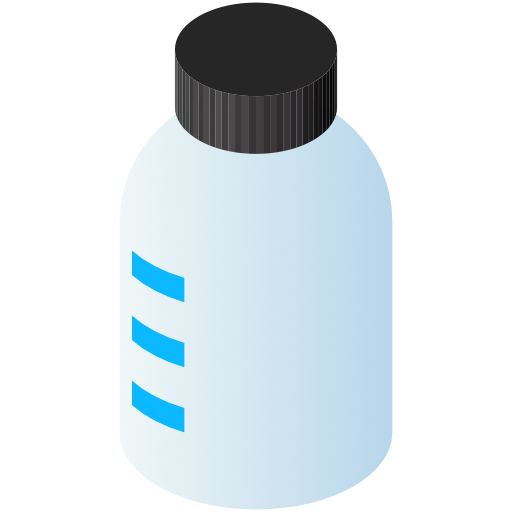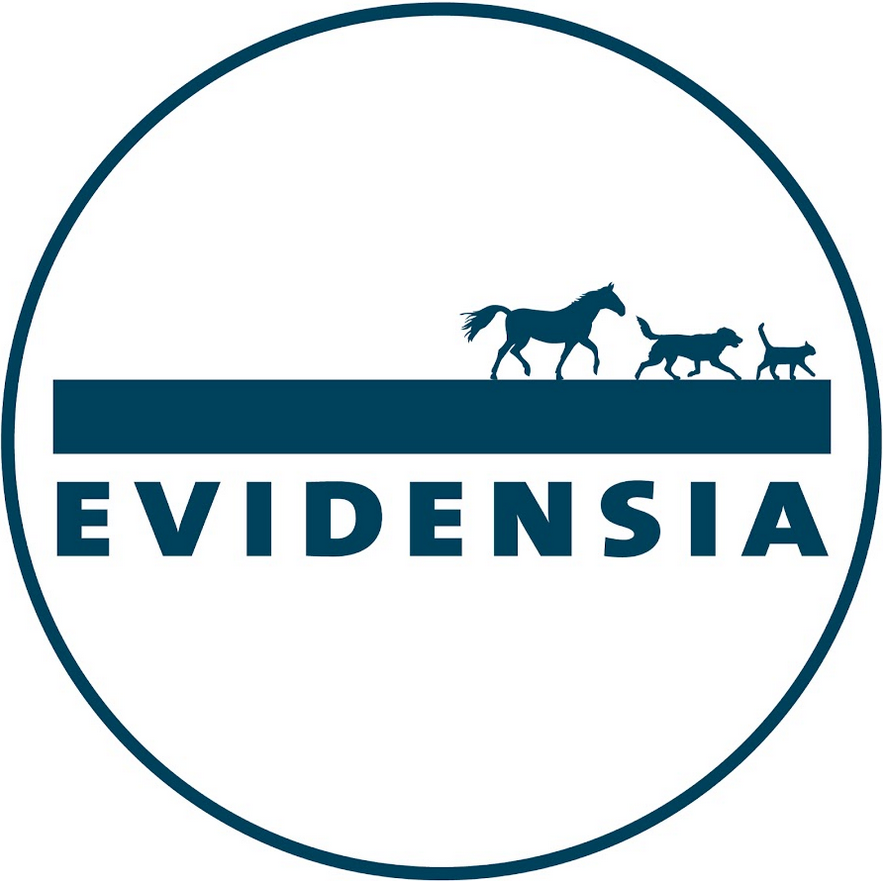Similar packages
Zanil Fluke Drench
Active substance
ATC code
Species
Cattle and Sheep
Indications
Indications: For the treatment and control of chronic fascioliasis in cattle and sheep.
It removes practically all flukes (Fasciola spp.) present in the bile ducts of the liver.
Dose to be administered and administration route
The product can be given to young, pregnant and lactating animals and those in debilitated condition (in the absence of inter current disease).
Give as an oral drench. Shake the product well before use.
The body weight of animals should be assessed as accurately as possible before calculating the dosage. The accuracy of the dosing device should be checked.
If animals are to be treated collectively rather than individually, they should be grouped according to their bodyweight and dosed accordingly, in order to avoid under- or overdosing.
Dose according to body weight at the rate of 10 mg oxyclozanide per kg body weight for cattle and 15 mg oxyclozanide per kg body weight for sheep as follows:-
|
Cattle : 3 ml per 10 kg body weight |
|||
|
Body weight |
Dose |
||
|
50 kg (approx. 1 cwt) |
15 ml |
||
|
100 kg (approx. 2 cwt) |
30 ml |
||
|
150 kg (approx. 3 cwt) |
45 ml |
||
|
200 kg (approx. 4 cwt) |
60 ml |
||
|
250 kg (approx. 5 cwt) |
75 ml |
||
|
300 kg (approx. 6 cwt) |
90 ml |
||
|
350 kg and over (approx. 7 cwt and over) |
105 ml |
||
Drench can be given in the feed to cattle which are fed individually. Pour the recommended dose onto their concentrate ration. Molasses or salt may be added for shy feeders.
|
Sheep: 4.5 ml per 10 kg body weight |
|||
|
Body weight |
Dose |
||
|
10 kg (approx. 22 lb) |
4.5 ml |
||
|
20 kg (approx. 44 lb) |
9.0 ml |
||
|
30 kg (approx. 66 lb) |
13.5 ml |
||
|
40 kg (approx. 88 lb) |
18.0 ml |
||
|
45 kg and over (approx. 100 lb and over) |
20.0 ml |
||
Adverse reactions
At normal oxyclozanide dose levels, cattle may show slight softening of the faeces with the occasional animal showing increased frequency of defecation and transient inappetence. The effects of oxyclozanide overdosage are dullness and some loosening of faeces in sheep and possible diarrhoea, inappetance and loss of weight in cattle. These effects are occasionally enhanced in animals with severe liver damage and/or dehydration at the time of dosing.
Dispensing
POM-VPS - Prescription Only Medicine – Veterinarian, Pharmacist, SQPSUMMARY OF PRODUCT CHARACTERISTICS
1. NAME OF THE VETERINARY MEDICINAL PRODUCT
Zanil Fluke Drench 34 mg/ml Oral Suspension
2. QUALITATIVE AND QUANTITATIVE COMPOSITION
Active substance: mg/ml
Oxyclozanide 34
Excipients:
Methyl hydroxybenzoate (E218) 1.5
Propyl hydroxybenzoate 0.15
Sodium metabisulphite (E223) 1.0
For full list of excipients, see section 6.1
3. PHARMACEUTICAL FORM
Oral suspension
A smooth off white pourable suspension
4. CLINICAL PARTICULARS
4.1 Target Species
Cattle and Sheep
4.2 Indications for use, specifying the target species
Indications: For the treatment and control of chronic fascioliasis in cattle and sheep.
It removes practically all flukes (Fasciola spp.) present in the bile ducts of the liver.
4.3 Contraindications
Do not use in cases of hypersensitivity to the active substance.
4.4 Special warnings for each target species
At normal dose levels, oxyclozanide is not active against immature flukes present in liver tissue.
Milking cattle, particularly high yielders, may occasionally show a reduction in yield of 5% or more for about 48 hours after handling. The effect of this small loss may be minimised by spreading herd dosing over a period of about a week.
4.5 Special precautions for use
i. Special precautions for use in animals
Care should be taken to avoid the following practices because they increase the risk of development of resistance and could ultimately result in ineffective therapy: Too frequent and repeated use of anthelmintics from the same class, over an extended period of time.
Underdosing, which may be due to underestimation of body weight, misadministration of the product or lack of calibration of the dosing device (if any). Suspected clinical cases of resistance to anthelmintics should be further investigates using appropriate tests (e.g. Faecal Egg Count Reduction Test). Where the results of the test(s) strongly suggest resistance to a particular anthelmintic, an anthelmintic belonging to another pharmaceutical class and having a different mode of action should be used.
To date no resistance to oxyclozanide has been reported. Use of the product should be based on local (regional, farm) epidemiological information about susceptibility of nematodes and recommendations on how to limit further selection for resistance to anthelmintics.
Care should be taken when administering by dosing gun.
Due regard must be given to the physical condition of the animals undergoing treatment, particularly those in advanced pregnancy and / or under stress from adverse weather conditions, poor nutrition, penning, handling etc.
ii. Special precautions to be taken by the person administering the veterinary medicinal product to animals
Do not eat, drink or smoke when using this product.
Wash splashes from eyes and skin immediately.
Take off any contaminated clothing immediately.
User should wear chemical resistant gloves during administration of the product. Wash hands and exposed skin before meals and after work.
4.6 Adverse reactions (frequency and seriousness)
At normal oxyclozanide dose levels, cattle may show slight softening of the faeces with the occasional animal showing increased frequency of defecation and transient inappetence. The effects of oxyclozanide overdosage are dullness and some loosening of faeces in sheep and possible diarrhoea, inappetance and loss of weight in cattle. These effects are occasionally enhanced in animals with severe liver damage and/or dehydration at the time of dosing.
4.7 Use during pregnancy, lactation or lay
The product may be given to young, pregnant and lactating animals.
4.8 Interaction with other medicinal products and other forms of interaction
None known.
4.9 Amounts to be administered and administration route
The product can be given to young, pregnant and lactating animals and those in debilitated condition (in the absence of inter current disease).
Give as an oral drench. Shake the product well before use.
The body weight of animals should be assessed as accurately as possible before calculating the dosage. The accuracy of the dosing device should be checked.
If animals are to be treated collectively rather than individually, they should be grouped according to their bodyweight and dosed accordingly, in order to avoid under- or overdosing.
Dose according to body weight at the rate of 10 mg oxyclozanide per kg body weight for cattle and 15 mg oxyclozanide per kg body weight for sheep as follows:-
|
Cattle : 3 ml per 10 kg body weight For example:- |
|
|
|
|
Body weight |
|
|
Dose |
|
50 kg (approx. 1 cwt) |
|
|
15 ml |
|
100 kg (approx. 2 cwt) |
|
|
30 ml |
|
150 kg (approx. 3 cwt) |
|
|
45 ml |
|
200 kg (approx. 4 cwt) |
|
|
60 ml |
|
250 kg (approx. 5 cwt) |
|
|
75 ml |
|
300 kg (approx. 6 cwt) |
|
|
90 ml |
|
350 kg and over (approx. 7 cwt and over) |
105 ml |
||
Drench can be given in the feed to cattle which are fed individually. Pour the recommended dose onto their concentrate ration. Molasses or salt may be added for shy feeders.
Sheep: 4.5 ml per 10 kg body weight
For example:-
Body weight Dose
10 kg (approx. 22 lb) 4.5 ml
20 kg (approx. 44 lb) 9.0 ml
30 kg (approx. 66 lb) 13.5 ml
40 kg (approx. 88 lb) 18.0 ml
45 kg and over (approx. 100 lb and over) 20.0 ml
4.10 Overdose (symptoms, emergency procedures, antidotes), if necessary
The effects of oxyclozanide overdosage are dullness and some loosening of faeces in sheep and possible diarrhoea, inappetence and loss of weight in cattle.
These effects are occasionally enhanced in animals with severe liver damage and/or dehydration at the time of dosing.
4.11 Withdrawal period(s)
Cattle
Meat and offal: 13 days.
Milk: 108 hours (4.5 days).
Sheep
Meat and offal: 14 days. Milk: 7 days
5. PHARMACOLOGICAL PROPERTIES
Pharmacotherapeutic group: Anthelmintics, Oxyclozanide
ATCvet code: QP52AG06
5.1 Pharmacodynamic properties
Oxyclozanide is an anthelmintic of the salicylanilide group. It is effective against Fasciola species, acting as an uncoupler of oxidative phosphorylation. It may act at more than one site to decrease levels of ATP leading to metabolic malfunction and death of the parasite.
5.2 Pharmacokinetic particulars
Oxyclozanide is slowly absorbed after oral administration with peak plasma levels 24 hours after dosing. Excretion is predominantly faecal, biliary excretion being the most important route of elimination (cattle studies only).
6. PHARMACEUTICAL PARTICULARS
6.1 List of excipients
Sodium metabisulphite (antioxidant) E223
Methyl hydroxybenzoate (preservative) E218
Propyl hydroxybenzoate (preservative)
Sodium laurilsulphate
Aluminium magnesium silicate
Carmellose sodium
Sodium citrate
Purified water
6.2 Incompatibilities
In the absence of compatibility studies, this veterinary medicinal product must not be mixed with other veterinary medicinal products.
6.3 Shelf life
Shelf life of the veterinary medicinal product as packaged for sale: 3 years
6.4 Special precautions for storage
Do not store above 25°C.
Protect from light. Do not freeze.
6.5 Nature and composition of immediate packaging
An off-white, smooth uniform suspension in the following packs:
5 and 10 litre high density polyethylene flexipacks with polypropylene or urea formaldehyde screw caps with wads of PVDC-faced paper or a pulpboard liner.
1, 2.5, 5 litre high density polyethylene back packs with polypropylene screwcaps.
6.6 Special precautions for the disposal of unused veterinary medicinal product or waste materials derived from the use of such products
Do not contaminate ponds, waterways or ditches with the product or used container.
Harmful to aquatic life.
Any unused veterinary medicinal product or waste materials derived from such veterinary medicinal products should be disposed of in accordance with local requirements.
7. MARKETING AUTHORISATION HOLDER
MSD Animal Health UK Limited
Walton Manor
Walton
Milton Keynes
Buckinghamshire
MK7 7AJ
8. MARKETING AUTHORISATION NUMBER
Vm 01708/4595
9. DATE OF FIRST AUTHORISATION
01 September 1972
10. DATE OF REVISION OF THE TEXT
December 2020 
Approved: 02 December 2020

 TRUSTED SOURCE
TRUSTED SOURCE








